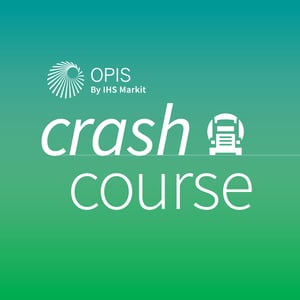IMO 2020: Practical Analysis from a Global Shipping Hub
2020 brings radical changes for the global shipping world. We’re talking about IMO 2020.
The IMO’s mandate requires ships to burn up to 0.5% (5,000 ppm) sulfur bunker fuel starting in January 2020. High sulfur fuel oil, now allowed up to 35,000 ppm sulfur, will only be permitted if the ship has scrubbing technology onboard to remove the sulfur. Preparations for using lower-sulfur bunkering fuels like very low sulfur fuel oil or marine gasoil have been underway.
There are many questions still up in the air as to how the new regulations will play out and what impact they will have on oil prices across the petroleum supply chain.
So, we turned to someone in the trenches to get some practical IMO 2020 guidance.
Ronald Backers, business intelligence advisor at the Port of Rotterdam, recently spoke on the OPIS Crash Course podcast about the complex and varied changes the port is expecting from the IMO2020 regulations.
Rotterdam is one of the largest bunkering ports in the world – number one in Europe, in fact. Total volume is around 10 million cubic meters per year. Changes in the sulfur specifications will have a huge impact on bunker fuels at this port and on the refineries and the terminals associated with it.
Backers offered some real-world perspectives and a look ahead beyond IMO 2020 in a recent podcast.
Listen to the full podcast here:
In the podcast, Backers makes the following key points:
- IMO 2020 stands to be positive for refiners who make the new Very Low Sulfur Fuel Oil (VLSFO), storage operators and fleets that have invested in scrubbers to bring non-complaint fuel up to spec.
- Extra costs will be incurred for shipowners/charterers who rely on Marine Gasoil (MGO).
- Increased imports of light U.S. crude oil, well-suited to making low-sulfur marine fuels, are already being seen into Rotterdam.
IMO 2020 to Change Worldwide Cargo Flows
Amid the new IMO 2020 spec changes, high-sulfur fuel oil (HSFO) arbitrage routes will shift significantly, Backers notes.
The current key arbitrage route from Rotterdam to Singapore, the world’s largest bunkering hub, will likely decline as HSFO demand collapses in the marine sector. But the rising oversupply has to go somewhere. So, at lower prices HSFO demand will likely emerge in refineries using it as feedstock and in the power generation sectors of countries with lower emissions standards, in the Middle East, Africa and Asia.
Click here for more analyses on IMO 2020.
Next Up: Fuel Decarbonization Eyed in a Post-IMO-2020 World
After the reduction in sulfur comes to pass, Backers foresees carbon reductions for the fuel slate, with the Port of Rotterdam already playing a role:
- The port already runs an incentive scheme for providers of low carbon bunker fuels
- The port is hosting a Megawatt electrolysis project, essential to scaling up carbon neutral hydrogen production using renewable energy.
- The Port of Rotterdam has called in the past for regional carbon pricing across NW Europe.
Looks like this port is well prepared for the spectrum of compliant fuels. Stay tuned as IMO 2020 regs — and more — roll out for updates the world over.
Discover a New Way to Learn About Fuel Prices
Each episode of the OPIS Crash Course.answers key questions in the fuel market related to oil commodities. Our goal is to bring you and anyone on your team up to speed on the dynamic fuel price marketplace, drawing on 40+ years of OPIS expertise.
You can find the OPIS Crash Course podcast free on:

